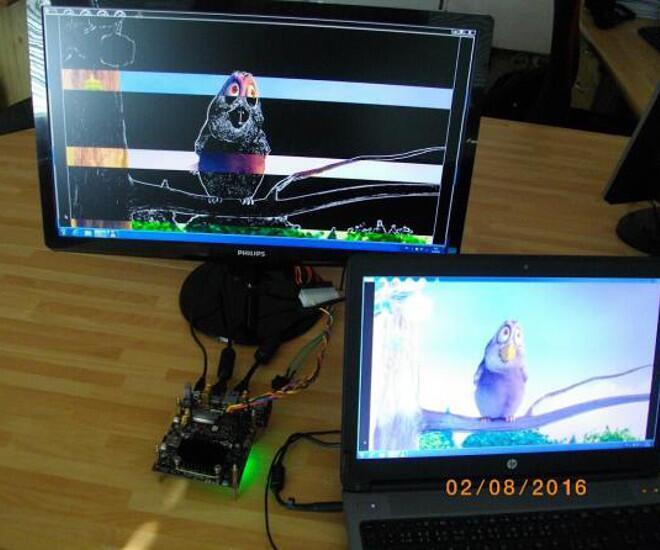Hardware accelerators speed up edge detection for embedded apps
Article By : Julien Happich

Hardware accelerators in the demonstration have achieved up to 50 times faster motion detection without a significant increase in power dissipation.
Czech Institute of Information Theory and Automation (UTIA) researchers have demonstrated video processing algorithms for the Sundance EMC2 platform using the Xilinx system-on-chip (SDSoC) 2015.4 design environment.
Hardware accelerators used in the demonstration were found to achieve up to eight times faster edge detection and 50 times faster motion detection without a significant increase in power dissipation, hence significantly reducing energy consumption.
Three edge detection and three motion detection video processing designs were demonstrated on the Sundance EMC2 platform. The results for image processing will enhance embedded applications in security, medical imaging and unmanned vehicles.
"The main innovation is in the SDSoC design framework," explained Jiří Kadlec, head of the signal processing department at UTIA. "Through this, developers can now estimate the acceleration for their algorithms, explore different avenues as necessary and export the best solutions as a stand-alone C application or Linux user space application."
Partly funded by the Artemis EMC2 project, the demonstration used a Dual-Core 32-bit ARM Cortex A9 processor of the Xilinx Zynq family to execute standalone C application programs, performing initialisation and synchronisation of the hardware-accelerated video processing chain. The C programs can be modified by the user and recompiled in Xilinx SDK 2015.4.
"While the framework has been presented on simple edge and motion detection, it is valid for fast I/O processing, industrial control—providing low latency—and connected items in the Internet of Things," noted Jiří. "In real-time and image processing, it links the hardware accelerator to the rich database of C/C++ algorithms from OpenCV."
"This represents a step forward for embedded applications where edge and/or motion detection is important, such as those relating to security, medical uses, unmanned vehicles and image processing in general," added Flemming Christensen, managing director of HiPEAC member Sundance.
Subscribe to Newsletter
Test Qr code text s ss


